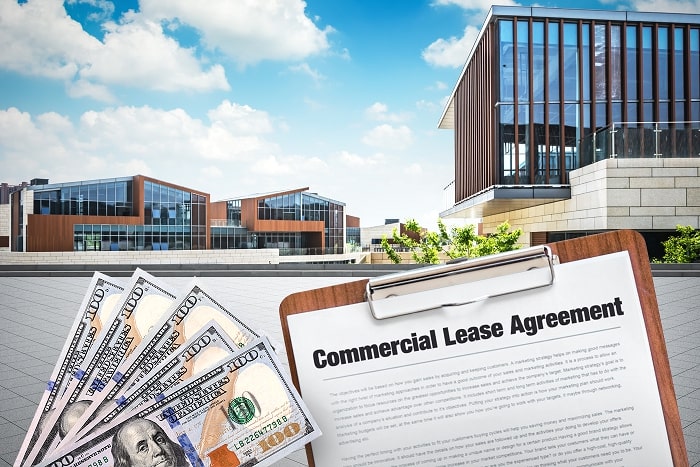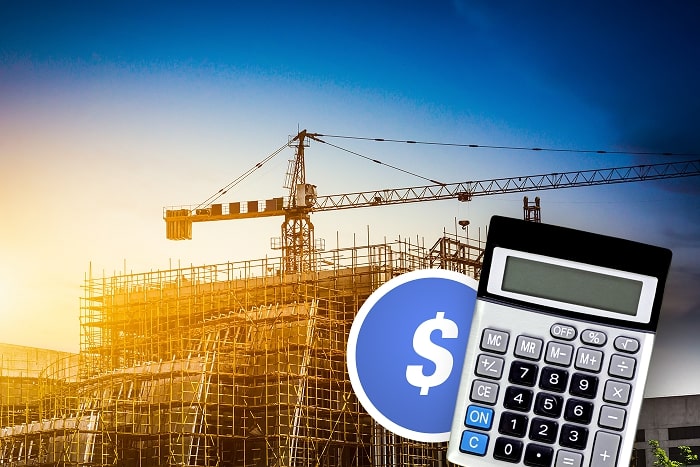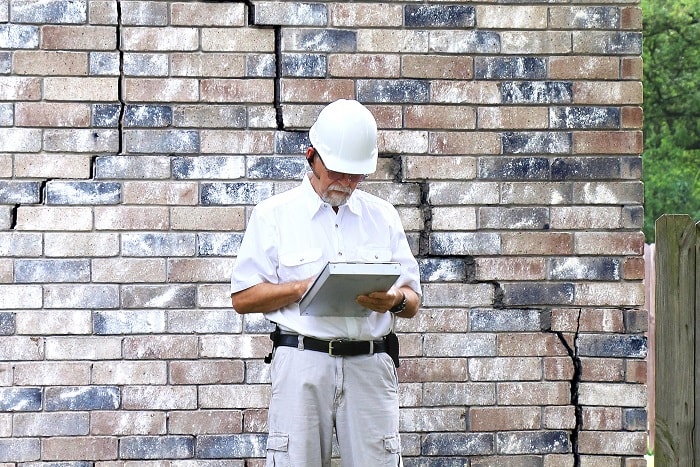How to Value Commercial Real Estate [3 Appraisal Methods]
**The information on this web page is provided for informational purposes only and should not be considered as legal, tax, financial or investment advice. Since each individual’s situation is unique, a qualified professional should be consulted before making financial decisions.**
Unless you’re regularly involved in the buying and selling of business property, you most likely need some help in calculating how much your commercial property is worth.
As an addition to our extensive guides Selling Your Own Commercial Real Estate and Commercial Real Estate Closing Costs for Sellers, the following article offers a detailed explanation of the common approaches in evaluating a commercial property.
After studying the guide, you will have the information you need to begin the appraisal process. You will be able to identify the details you want to do yourself and those you will delegate to others.
3 Methods of Appraising a Commercial Real Property
Three approaches are commonly used to determine the fair market value of commercial real estate:
- The income method.
- The comparison method.
- The cost method.
The values determined by each of the approaches are factored into the estimated market value of a commercial property. But each approach won’t get equal consideration in the appraisal process. Depending upon the type of real estate and the local market, one method may be weighted more than the others.
Here is a short summary of all three approaches this guide explains in detail:
- The income method calculates the commercial property value from rent revenue in one of two ways: dividing the annual gross rents of the building by the gross rent multiplier or dividing the net income by the capitalization rate.
- The comparison method uses recent sale prices of comparable properties to determine the building’s estimated value.
- The cost approach values a commercial property based on the cost of the building (less appreciation) added to the value of the land.
#1 Income Method: How to Calculate Commercial Property Value Based on Rental Income

Since the income method relies primarily on the revenue stream of commercial rental property, the source of the revenue must be considered. The income method has to be weighted differently for different types of commercial real estate.
A large apartment complex is a good candidate for the income method. The risk of vacancy is spread out over multiple tenants—minimizing the fluctuations in rental income, even with changing economic conditions.
A shopping center consisting of an anchor store and a strip mall can be effectively valued using the income method—as long as the anchor space draws shoppers to other stores. But what happens if the anchor space sits vacant for months on end, or if it attracts a business whose clientele don’t shop at the other stores?
The more inconsistent the rental income is, the less reliable the income method becomes when assessing the value of a commercial property.
Using Gross Rent Multiplier
What Is Gross Rent Multiplier or GRM?
In commercial real estate investing, the gross rent multiplier (GRM) is calculated by dividing the selling price (market value) of an investment property by the property’s gross rental receipts.
Determining the property’s gross rental receipts is a straightforward process. Just remember that the gross rental income used in the calculation is the total annual rental revenue at 100% occupancy—with no deductions for expenses.
Gross Rent Multiplier = Value of Property / Gross Rental Income
Calculating the Property Value Using GRM
Look up online average GRM for your area and building type.
To calculate the property value, just reverse the formula:
Value of Property = Gross Rental Income * Gross Rent Multiplier
The GRM also helps you check the rent to value ratio of your commercial property in comparison to similar properties. As an example:
The owner of a ten-unit apartment building paid $1,000,000 for the 10,000 square foot structure just over one year ago. The gross rental income for the year was $72,000. The GRM is calculated as follows:
$1,000,000 / $72,000 = 13.89 (GRM)
The owner now wants to sell the property for $1,100,000. A buyer looks at the listing using the 1% rule. This rule of thumb states that gross monthly rents should be equal to or greater than 1% of the purchase price. The potential buyer does their own quick calculations:
$1,100,000 X 1% = $11,000 (monthly) or $132,000 (annually)
$1,100,000 / $132,000 = 8.33 (GRM)
Comparing a 13.89 GRM to a 8.33 GRM shows the buyer that the property is overpriced based on its rental income.
Before a buyer is interested, the seller realizes that the rents must be increased or the price lowered, so the GRM is less than nine.
Using Capitalization Rate
What Is Capitalization Rate?
The capitalization rate is a percentage that reflects the earning power of a commercial real property. An acceptable cap rate for investment properties is generally considered to be between 8% and 12% (for the majority of markets).
To estimate the capitalization rate:
- Estimate the potential gross income at 100% occupancy.
- Subtract the average vacancy and collection losses.
- Subtract all building expenses (fixed, operating, and reserves).
The resulting figure is the net operating income (NOI). The net operating income divided by the sales price (market value) equals the capitalization rate.
Calculating the Property Value Using Capitalization Rate
As an example, the owner of an apartment building knows that the average cap rate for similar apartment buildings in their market has been approximately 7% for the last six months. The NOI for their building was $40,000 for the previous year. By using the formula:
$40,000 (net operating income) / 7% (capitalization rate) = $571,428 (sales price)
they see that they should value their building at approximately $572,000 to be competitive with comparable properties (regarding the cap rate).
#2 Comparison Method: How to Look Up Similar Commercial Properties’ Market Values

Sales prices of comparable properties must weigh heavily in any appraisal. In this section, you can get some tips on how to find out the price a commercial property was sold for.
Public Records
In all but about a dozen states, the sales prices for real estate transactions are public record. Most county offices’ websites have limited online search functions, so you must visit the corresponding county’s courthouse for the relevant documents.
But if you want to compare sales data for a large number of properties, this type of search can be time-consuming.
In the dozen or so ‘non-disclosure’ states and some counties of the rest of the states, no records of sales data are available for public review. And determining the sales price for a property in one of these states through public records is a best-guess scenario.
In non-disclosure states, the back-door approach to a property’s sales price is derived from using public tax records. The assessed value of the property can be obtained from the county’s assessor.
And this value can be used to determine the market value. But such a calculation is a rough estimate at best, since county appraisals are often not consistent with current market values.
List of non-disclosure states (please note that states may change their status over the time):
- Texas
- Indiana
- Maine
- Kansas
- Missouri
- Wyoming
- Louisiana
- Idaho
- Alaska
- Montana
- North Dakota
- Mississippi
- New Mexico
Commercial Real Estate Websites
Doing online research is much more convenient than searching through public records. And several online listing sites show the asking prices of currently available commercial real estate.
Officespace.com is quick and easy to use for finding the asking prices of commercial properties currently for sale. But officespace.com has no prices for recently sold properties.
While knowing the asking prices of comparable buildings can help you in determining your building’s value, the numbers are not as accurate as actual sales figures.
LoopNet.com is similar to Officespace.com as a listing site. But Loopnet.com has more properties listed and some additional enhanced commercial real estate marketing information.
You will have to pay for actual sales figures when using a site such as CoStar.com. CoStar.com is the parent company of LoopNet.com and is one of the largest commercial real estate platforms—serving Canada, the UK, and the US.
It’s also the most expensive real estate data provider because they have a massive database, which contains both sales comps and lease comps for recently sold properties—in addition to their other services.
PropertyCashin Commercial Property Marketplace is another place to look for comparable properties. This platform is relatively new and not as famous, so depending on your location the number of listings may vary.
News Sites
Real estate agents frequently list sold commercial properties on news sites such as local newspapers and trade journals (both digital and online).
As an example, if you are looking for comps in New York City, the New York Times lists many of the recently sold commercial properties. Local news outlets in other parts of the country may or may not have data on recent sales.
Trade journals are likely to showcase only the sales of unusual properties that would attract readership, such as a historic property.
While the comps you need may be located on a news site, there’s no efficient search mechanism to find them. It is recommended to use news sites for comps only as an additional resource.
#3 Cost Method: the Most Complex Way of Property Valuation

Overview
The premise underlying the cost approach is that buyers won’t spend more on an existing property than it would cost to build a brand new similar property.
The cost method differs from the two other common approaches because no comps are used when valuing the building, so the calculations don’t depend on current real estate market trends. The land, however, is valued by using comps.
The cost approach to property appraisal is simple in concept:
Land Value + (Building Cost New – Accumulated Depreciation) = Property Value
But the calculations can be extremely complicated when the building is older, and the construction materials are no longer commonly used. The cost method yields the most accurate market value for new (or nearly new) construction.
How to Value Commercial Land
The most common method for estimating land value is by using comparables of recently sold parcels.
When the data is available, land value can also be determined from new construction of similar value to your property. Using the cost method, determine the value of the building. Deduct this value from the total project cost to estimate the land value.
How to Determine Cost New
To determine a building’s cost new, estimate the money needed to replace the existing building with another of similar size and function.
When the materials are similar, such a calculation is straightforward. As an example, the cost of building a new bricked, four-story office building to replace a twenty-year-old bricked, four-story office building is easy to determine.
But when the materials differ, the calculation becomes complicated—if not impossible. As an example, a 120-year-old cut-stone building with a slate roof has been converted into an office building.
What would it cost new? (Certainly, more than what most buyers looking for an office building would be willing to spend.)
When estimating the cost new of a replacement or a reproduction (such as an historic building), four methods are used:
- Comparative Unit Approach. Using a lump-sum estimate of all materials as a per-square-foot cost.
- Segregated Cost Approach. Breaking down the estimate by pricing each of the major components, such as the roof system.
- Unit-in-Place Approach. Further breaking down the estimate by pricing the sub-components of each major component, such as decking and structural components of the roof system.
- Quantity Survey Approach. Even further breaking down the estimate by pricing each item in the building—as a contractor bidding the job might do.
Generally speaking, when a building is not constructed of commonly used materials, the cost approach is difficult to apply.
How to Determine Depreciation
The cost new value of a building less any deductions for loss of value equals its depreciated value.
The loss of value can come in three ways:
- Physical
- Functional
- External
Physical depreciation comes as a result of natural wear and tear from occupancy. A Class A apartment building can quickly become a Class B building if maintenance is neglected.
But in theory, a Class A apartment building could remain Class A indefinitely if maintained in new condition—and if continually updated with the latest technologies.
Functional depreciation is measured as building function becomes out-of-date, or obsolete. As an example, an old apartment building with no elevator and with laundry facilities located in the basement has a significant amount of functional depreciation.
External depreciation is the result of adverse conditions in the neighborhood or the local economy. For example, the closing of a corporate headquarters in a city contributes significantly to the external depreciation of nearby office buildings.
Using a Professional Appraiser

To accurately appraise a commercial property is a complicated, time-consuming process that demands meticulous attention to detail. But there’s also an element of art to the process that only experience can provide.
After studying the many aspects of a commercial property appraisal as presented in this guide, the value of hiring a professional commercial real estate appraiser should be apparent.
For an average-sized commercial property, expect to pay up to $5,000 for an appraisal. A large building could cost $10,000 or more. But using a professional appraiser to assist you in valuing your property has the potential of netting you more than enough money to cover the cost.
When You Don’t Need Appraisal

It is recommended to know the market value of your commercial real estate property—no matter how you decide to sell it.
But if you choose to sell to a cash commercial property buyer rather than traditionally with a commercial broker or a real estate agent, you do not need to have such a thorough appraisal as has been outlined in this guide.
Any reputable investor can appraise your property and make an offer quickly. But if you request a cash offer on your commercial property from PropertyCashin, we will have it for your review within 24 hours of our visit.
We are a nation-wide team of experienced commercial real estate investors. And after reviewing and accepting our offer, you will have cash in hand for your property within a few days.